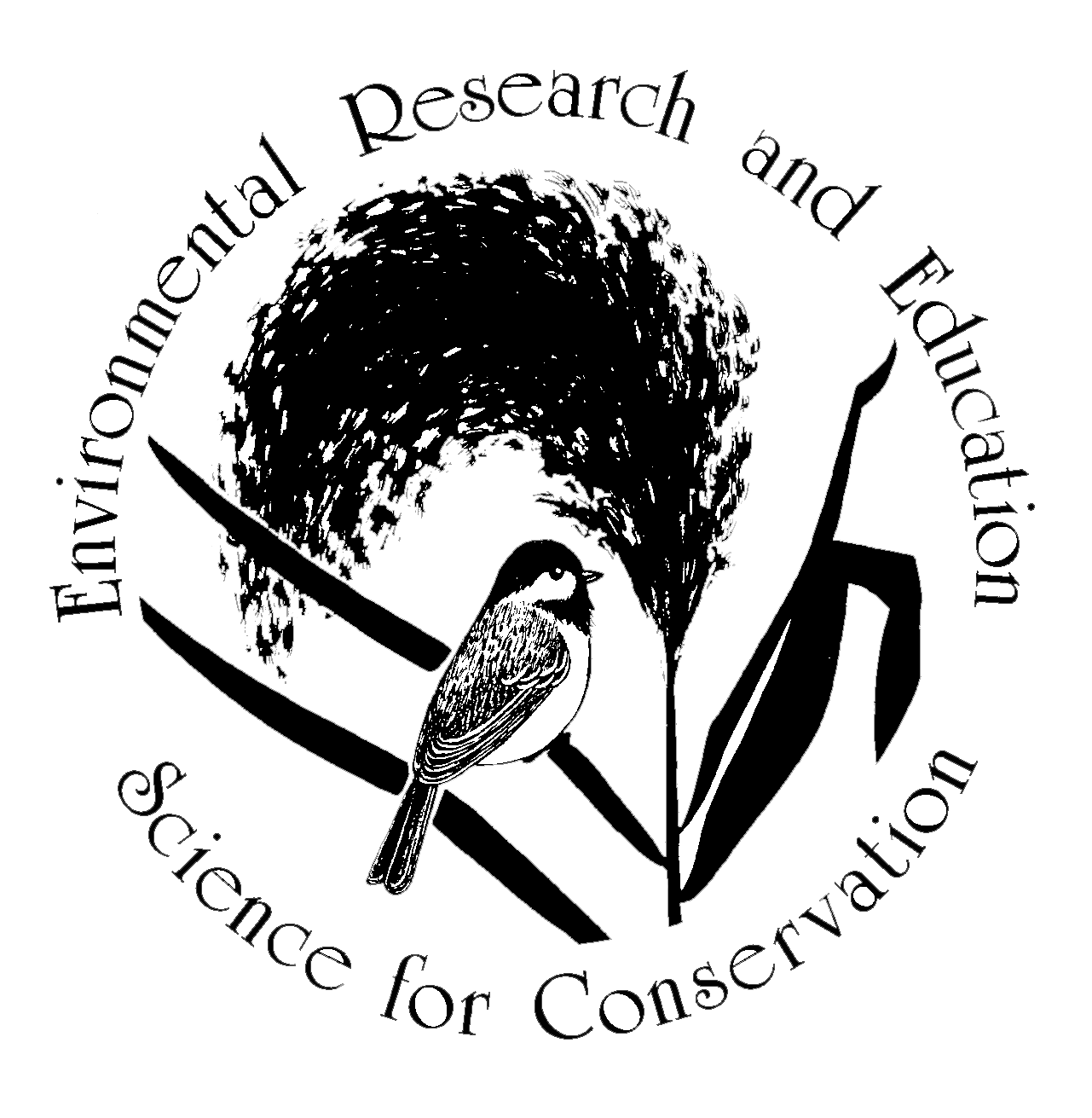Alice in Meadowlands
Erik Kiviat wrote this piece, originally published in News from Hudsonia Volume 28(1), Spring 2014, halfway through Hudsonia’s study of the New Jersey Meadowlands. In addition to evoking the rich species of the Meadowlands, he raises central questions about how we spend conservation dollars, and the dangers of our common failures to understand that extant habitats, functioning in heavily altered landscapes, are valuable starting points.
Ecologists and environmental professionals could learn from Alice in Wonderland. She reported many astute observations about the organisms she encountered, some fanciful, and others realistic including a flamingo, hedgehog, dormouse, two species of rabbits, walrus, lion, oyster, caterpillar, tiger-lily, rose, and a mushroom. When I reflect on my experiences studying biodiversity in the New Jersey Meadowlands, I feel like an urban Alice: observing many fascinating animals and plants, yet sensing a disjunction between the reality of nature and human attempts to manage it.
Many biologists and naturalists think of urban areas, such as the Meadowlands, as poor environments for biodiversity. In some respects, they are, because of pollution and intensive human alteration of habitats. Yet the Meadowlands attract diverse waterfowl, shorebirds, birds of prey, diamondback terrapin, a number of butterflies and dragonflies including the spectacular scarlet males of Needham's skimmer, and both common and rare vascular plants and mosses, all organisms that can cross the urban landscape and find suitable habitats. Why do these organisms seem to thrive here, and how should we be conserving and managing their environments?
The Meadowlands have been intensively used for centuries, for logging, salt hay harvest, agriculture, disposal of garbage and hazardous materials, industry, transportation hubs and yards, and residential development, and have been extensively altered for mosquito control. More recently the Meadowlands have hosted scientific research, ecotourism, and wetland "mitigation." I began studying the biota of the Meadowlands in 2000 when asked to review the environmental documents for a 200 acre fill and development in one of the largest remaining wetlands. This piqued my interest in the region and soon collaborator Kristi MacDonald and I prepared a synthesis of Meadowlands biology, papers for a scientific journal, a nontechnical booklet, and eventually a book manuscript
The more we reviewed published and unpublished information and explored the area ourselves, the more complexity we found in the supposedly simple and unimportant urban habitats. Most of the previous biological study of the region has focused on fishes, birds, and a few plants; I have also surveyed amphibians, reptiles, butterflies, dragonflies, land snails, higher plants in general, mosses, liverworts, and lichens. Most of the conservation and management attention has focused on tidal marshes, although half of the endangered or threatened birds, and many other rare species occur in nontidal freshwater marshes, wet and dry woodlands, rocky crests, and other upland habitats.
Certain taxa (evolutionarily related groups of organisms, such as hawks) and guilds (functionally related groups, such as water birds) are diverse or abundant in the Meadowlands, whereas other native organisms are absent or few in species and low in abundances. Let's call these urban-tolerant and urban-sensitive, respectively. Among the former are water, shore, and marsh birds, diurnal birds of prey, estuarine fishes, and woody plants. Among the latter are amphibians, freshwater fishes, stream insects (stoneflies, black flies, etc.), land snails, liverworts, horsetails, conifers, true sedges (Carex), and orchids. Probably the urban-tolerant and urban-sensitive classification can be used to predict biodiversity representation in other cities and industrial regions.
Whether a group of species does well or not in the Meadowlands is related to the species pool available in the surrounding region, the permeability of the Meadowlands landscape to colonizing individuals, and the quality of habitats present for those species. For example, amphibians have difficulty traversing dry or saline areas and many require natural soils for burrowing, characteristics that evidently make the Meadowlands a harsh environment for them. Wild-rice, formerly abundant in the Meadowlands, needs fresh (not brackish) water of good quality and no longer occurs there, and the same is true of Atlantic white cedar.
At the moment it is politically fashionable to manage marshes by killing the frequently dominant common reed (Phragmites australis) with herbicide, often removing a surface layer of the soil that contains the bulk of the reed rhizomes, and planting native marsh plants, especially cordgrasses (Spartina) in brackish water and cattails (Typha) in freshwater. The federal wetland permits for these activities generally require a five-year maintenance period; after that the marsh is on its own. Even though marshes treated thusly over the past 25 years have mostly been recolonized by reed (widely viewed as a pest), such "restoration" projects continue in the Meadowlands. And there are other problems with this kind of management; for example, the herbicides used to kill reed are also toxic to desirable plants and animals, so rare and common native species (in many cases unknown) that inhabited the site before management may be lost; with the loss of reedbeds we also lose their superior sediment-anchoring and sediment-building services, which may be increasingly important in the face of rising sea level. Cordgrasses are vulnerable to urban water quality and "saltmarsh dieback" so may be a poor choice in these highly-stressed habitats.
Let's look at a specific example. Nearly six hundred acres of tidal and formerly tidal marsh were preserved as the Richard P. Kane Natural Area to protect them from the proposed development that I first went to study in the Meadowlands. In 2010, more than 200 acres of this site was turned into a "mitigation bank" -a wetland that is created or restored in order to sell credits that allow permitted destruction of wetlands elsewhere. During construction of the bank, all the habitat then known in the state for a globally rare invertebrate (the clam shrimp Cyzicus gynecia) was destroyed; the habitat of a rare flatsedge (Cyperus polystachyos) was turned into an equipment park; the last known remnants of bluejoint grass (Calamagrostis canadensis) wet meadow in the region were killed; the area where the state endangered northern harrier had bred was greatly altered; potentially invasive nonnative plants (other than reed) were spread by construction equipment; and one of the Meadowlands' most interesting nature watching areas along two-thirds of a mile of gas pipeline service road was closed to public access. Aldo Leopold, often considered the father of ecological restoration, famously said, "To keep every cog and wheel is the first precaution of intelligent tinkering”. Well, the cogs and wheels of Kane and the Meadowlands overall are not being saved – we don't even know what many of those parts are.
It should sober our visions of restoring, enhancing, or mitigating wetlands to know that many ecological characteristics of restored wetlands, such as plant communities and carbon storage, on average, are not fully recovered even after a century. Some degraded wetlands are not restorable, and restoration of the complex biology and structure of wetland soils is especially challenging. There is reason for optimism, however, in the relatively diverse biotas, rare species, and ecosystem services already supported by the degraded wetlands of the Meadowlands. Rather than taking these systems apart and attempting to make them whole again, we should try to gently increase certain aspects of wetland structure and function. Whether the ability to improve the quality of degraded wetlands "mitigates" the destruction of other degraded wetlands is open to question.
LESSONS IN NATURE MANAGEMENT
What do the Meadowlands teach about urban biodiversity in general? Many species have come and gone in this area during the past century or two, and there remain no reference sites to tell us what the biological communities of the Meadowlands and most other cities were like before large-scale human impacts. Even now, things change quickly in urban areas; a stonewort pool is here one day and half-filled the next, and a woodcock display ground is here one spri.ng and the next spring is covered with condos. As elsewhere, the climate has changed, sea level has risen, and we have pervasively altered the hydrology and chemistry. Species of northern affinities are under increasing stress, and species of southern affinities (native or not) will colonize from the south. A few northern species may survive in "cool spots" such as the odd sugar maple stand in the shade of the New Jersey Turnpike at Laurel Hill.
Not only are attempts to "restore" habitats poorly informed by historic data, but recreated plant communities such as cordgrass salt marsh or Atlantic white cedar swamp are expensive or impossible to maintain because the conditions that once fostered them have degraded. Hence,
we need to learn about and respect what's here now, albeit mostly "novel" communities with mixtures of native and nonnative species, or small fragments of native communities such as hardwood swamp, chestnut oak forest, or bluejoint wet meadow. A viable approach may be to modify the existing reed marshes to improve habitat for some of the many native species that are associated with reedbeds, while retaining the other ecosystem services provided by reed such as sediment stabilization and carbon sequestration. Partial harvest of reed biomass for habitat management could contribute to a mixed bioenergy feedstock along with the lawn clippings, shrub prunings, tree leaves, and other organic waste materials from urban areas.
In any case land managers should be aware that "restoration," "mitigation," or "enhancement" projects that are politically popular and most fundable may not be best for biodiversity. We need to document, conserve, and manage urban habitats and species, including the important elements that are not necessarily popular. The Meadowlands are an icon of urban biodiversity and an increasingly hazardous region for human habitation due to flooding, contamination, and other problems. Let's manage the Meadowlands for the nature that survives or thrives there, and the human uses that will continue to be safe and healthful. The same may be said for other areas at the fringes of New York City, the Hudson River wetlands, and greenspaces in many other developed regions.
In between her natural history observations, Alice puzzled at the disjunction between the environment and those managing it. She could have been exploring nature and politics in the Meadowlands where perceptions of and efforts at conservation seem not to follow rules. Put another way, Grace Slick bemoaned the death of proportion and logic in Alice's world. To avoid this in other cities and, especially, urbanizing regions such as the Hudson Valley, we should learn to see nature without the distorting influence of convention, money, and politics, and use extant habitats as starting points that can be gently nudged in the direction of improved support for species of conservation concern and higher levels of other ecosystem services.
1. Carroll, L. No date. Alice's adventures in Wonderland and Through the looking glass. Three Sirens Press, New York, NY. 244 p.
2. Kiviat, E. and K. MacDonald. 2002. Hackensack Meadowlands, New Jersey, biodiversity: A review and synthesis. Hackensack Meadowlands Partnership. 112 p.
Available at www.husonia.org.
3. Leopold, A. 1953. Round River: From the journals of Aldo Leopold. Oxford University Press.
4. Moreno-Mateos, D., M.E. Power, F.A. Comfn and R. Yockteng. 2012. Structural and functional loss in restored wetland ecosystems. PLoS Biology 10(1 ):
e1001247.
5. Slick, G.W. 1965[?]. White rabbit. Universal Music Publishing Group, EMI Music Publishing.
6. Zedler, J.B. 2000. Progress in wetland restoration ecology. Trends in Ecology and Evolution 15(10):402-407.


